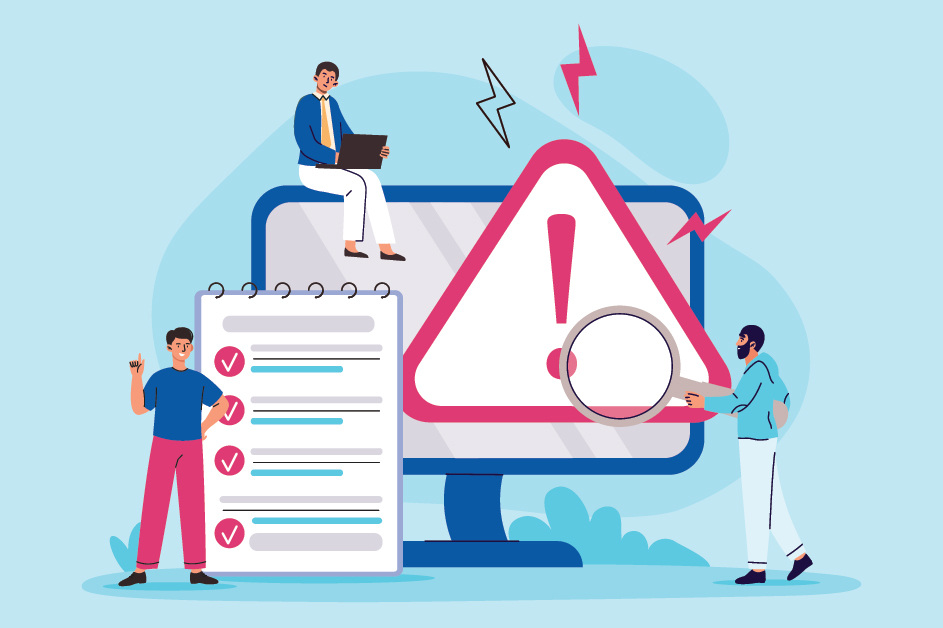Ideally, you’d like zero risky business in your organization. Unfortunately, chances are pretty great that you have at least some degree of exposure (regardless of the industry). What risk? Well, that’s the point. To intentionally safeguard your company and ensure that it’s compliant, secure, and risk-free, you have to know what sort of threat you’re facing in the first place. That’s where a risk assessment comes into play, locked and loaded.
But how can you ensure you’re using the right tools to highlight all risks (especially ones that are difficult to spot)? Businesses need a risk assessment methodology, not just any – the right one. Here’s a breakdown of risk assessments and methods to ensure nothing slips through the cracks.

What is a risk assessment anyway?
Today’s security landscape is complex, that’s for sure. But what can organizations do to combat threats and vulnerabilities? Since exposure can come from many factors, businesses can only effectively cover some blind spots because hits come from every angle. Whether the security or compliance risks come from an external actor, a careless employee, or your business infrastructure, it’s there. And just because it’s more challenging to spot doesn’t mean it will resolve itself.
Risk assessments help decision-makers understand how to navigate and remove the inherent risks to their business and help them prioritize the impact of each risk and its probability of occurring. Through an in-depth risk assessment, companies can evaluate a specific risk mitigation protocol that will remove exposure and align with their preferred budget, timeline, and business strategy.
During this step, you’ll determine the possible loss of revenue or other effects and harmful outcomes.
Risk analysis is one step within a risk assessment
Using the terms ‘assessment,’ and ‘analysis’ interchangeably feels natural, and rightly so. However, in this specific case, there are subtle differences that are essential to take note of.
A risk assessment is a process for identifying all potential risks.
A risk analysis is one step within the assessment process. During a risk analysis, each individual risk (found in the assessment) will be evaluated individually and assigned a score. Generally, a risk assessment will cover four basic steps:
Risk identification:
This step highlights all risks that may harm your organization. This should be a layered approach and focus on risks that go beyond those that are most evident and should consider external and internal factors.
Potential impact:
During this step, you’ll determine the possible loss of revenue or other effects and harmful outcomes. Assessing the potential impact involves evaluating the consequences of identified risks, including financial losses, operational disruptions, and reputational damage.
Risk analysis:
Risk analysis looks into each risk and creates a strategic action plan for taking the best measures in proportion to the risk levels and their likelihood of occurrence. This helps businesses prioritize a risk mitigation strategy that best suits their budget and specific business goals. The risk analysis phase delves into individual risks pinpointed during the assessment, assigning each a score based on factors like likelihood and severity. It forms a crucial step in crafting strategic action plans tailored to the specific risk landscape.
Review:
Finally, risk assessments are reviewed periodically. This helps determine where circumstances may have changed, how it impacts your risk management, and the likelihood of new risks that could affect your organization.
However, more than these steps are needed for a business to get an in-depth and clear understanding of its security landscape, which is why companies implement a particular risk assessment methodology. A risk assessment methodology is a strategic and disciplined approach that helps companies work through the above steps. With the correct methodology, risk assessments can happen more frequently and efficiently. It will ultimately deliver better results, as you’d follow a solid and thorough methodology.
Periodic reviews of risk assessments are imperative. These reviews help adapt to evolving circumstances, gauge the effectiveness of risk management strategies, and anticipate emerging risks that could impact the organization
Types of risk assessment methodologies
There are two overarching risk assessment methodologies; qualitative and quantitative. The right approach usually includes a healthy balance between the two.
Quantitative risk assessments:
When it comes to a quantitative approach, it’s all about analytics, data, numbers, and digestible information with a monetary value. It uses measurable data points to assess risk and quantifies it. This method can communicate the risks and threats in a way that highlights the cost of assets and the risk attached to them.
Through a cost-benefit analysis, organizations and their stakeholders can better prioritize mitigation options and align them with their security budget, as well as the potential financial loss if left as-is. Boards and business leaders frequently prefer this type of risk assessment as it can answer specific questions with figures.
However, not all questions are quantifiable, like “what will happen to productivity or operations when there is a cyber security attack?” Or “what would the potential reputational damage be in case of a data breach?” and “how do we communicate the urgency to internal staff and train them accordingly?” That’s where qualitative risk assessments come into play.
Quantitative risk assessments leverage analytics and measurable data points to provide a numerical perspective on risks. This approach aids in cost-benefit analyses, allowing organizations to prioritize mitigation efforts based on potential financial impacts.
Qualitative risk assessments:
Qualitative risk assessments take a more subjective approach as opposed to figures only. It looks at the people and processes within the organization and how risks and threats would affect the overall operations within a company. This method is frequently scenario-based and answers the ‘what-if’ questions to different threat vulnerabilities.
Qualitative risk assessments take a subjective approach, considering the human and process elements within the organization. It addresses ‘what-if’ scenarios, offering insights into how threats could affect overall operations.
How to choose the best for your company
Suppose your organization needs to conduct a risk assessment. In that case, it’s first essential to establish whether or not you’d like to complete one within a specific department or across the entire organization or extended enterprise. This will help establish which methodology may be the best starting point. Other contributing factors may include your industry, your organization’s location, or your company’s size.
Different security and regulatory frameworks require specific risk assessment techniques, which should factor into your decision-making. For example, if you’re working towards an ISO 27001 certification, you’ll have to know how to perform an ISO 27001 risk assessment.
Additional risk assessments required by regulatory frameworks include:
HIPAA security risk assessments
If your organization is subject to The Privacy Rule and is required by law to comply with HIPAA rules and regulations, a general risk assessment won’t suffice. A HIPAA security risk assessment is a strategic and specific assessment method that evaluates compliance. It will assess your organizational safeguards, which include administrative, physical, and technical safeguards, and their effectiveness in protecting PHI.
SOC 2 and ISO 27001 risk assessments
When it comes to security frameworks, risk assessments play a vital role in the preparation process and overall success of your audit. ISO 27001 and SOC 2 require specific risk assessments in line with their respective standards, to ensure due diligence and avoid security pitfalls.
Unfortunately, as in the world of compliance, it’s challenging to understand what exactly the process entails or how it should be carried out, leading to incomplete or unsuccessful audits.
Due to this, many organizations are opting to get it right from the get-go through industry-specific risk assessments that also apply to their compliance framework and security standards. This ensures that they find the correct answers and ask the right questions from the start.
Leave nothing up to chance with industry-specific risk assessments
Fortunately, you don’t have to settle for swinging in the dark with the proper risk assessment methodology. And no, that doesn’t mean spending the vast majority of your time and resources to fine-comb through every inch of your organizational process (let alone thousands of external threats).
Automate and complete your risk assessment with Scytale in less than one hour
Identify and mitigate security gaps with our automated risk assessment for SOC 1, SOC 2, ISO 27001, or HIPAA compliance here. Take a look at what our customers are saying!










